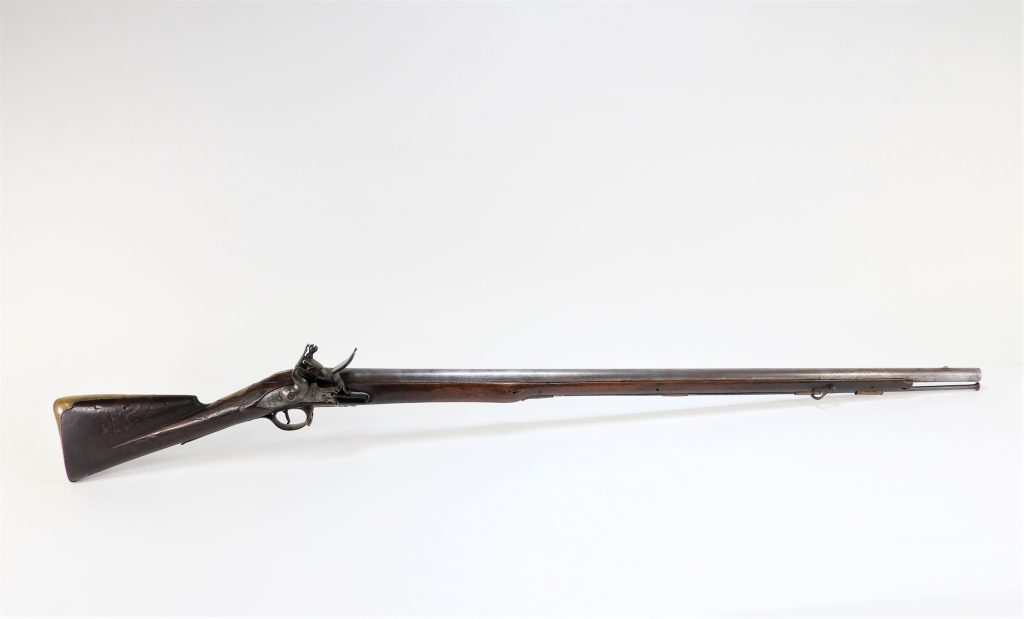Last week I was down at Colonial Williamsburg and had a chance to tour the conservation labs as well as the museum. While in the lab I spied a British Pattern 1742 long land musket sitting on a table waiting for some conservation. To me, these are one of the prettiest muskets ever built. The beefy walnut stock, shape of the butt, and the banana-shaped lock always attract my attention. It’s also an extremely rare gun. I am a fan of all the British land pattern muskets, but the Pattern 1742 has always been my favorite. So When I got home, I pulled one off the shelf and spent some time admiring it.
The example I have was shortened from forty-six inches to forty-two and was probably done during the period. The bayonet lug was properly reinstalled, the stock was cut back a bit, and the brass entry pipe for the brass-tipped wooden ramrod was lowered. To also conform to the new regulations, an iron ramrod replaced the original wooden. On archaeological sites in the Champlain Valley and other places, four-inch sections of cutoff barrels have been found, but I had never seen a complete gun with this modification.

The lock is marked “JORDON/1742,” with a crown over “GR” and a crown over a broad arrow government ownership marking. The barrel also has a crown stamp just above the vent on the barrel. The brass butt plate tang is marked with the rack number “A/18” to designate the company of the man who carried it as well as his number in the company. The bore is .78” and fired a .69 caliber ball per regulation. This has been verified in period documentation as well as in an archaeological context.
The shape of the butt is wonderful! It is really substantial with a carved nose and a storekeepers stamp on the right side. The fore stock has a large swell at the lowest ramrod pipe and tapers a bit towards the muzzle. Overall, just a really beautiful piece of hand-made craftmanship!
French guns of the period were of a lighter weight and smaller bore with bands that held the barrel in place on the stock, while the British gun barrels were held in place with pins. This made the French guns easier for a soldier to take apart and clean, but to me the French guns just aren’t as pretty as the British examples. It’s hard to describe these muskets without sounding like a very strange person.
If you ever get to Colonial Williamsburg, check out the DeWitt Wallace Decorative Arts Museum. They not only have wonderful collections of just about everything 18th century, and their arms collection is stunning.
For a great book on British land pattern muskets that is written so anyone can understand them, see Erik Goldstein & Stuart Mowbray, The Brown Bess: An Identification Guide and Illustrated Study of Britain’s Most Famous Musket (Woonsocket, RI: Mowbray Publishing, 2010).




